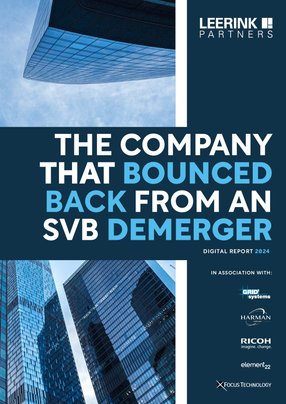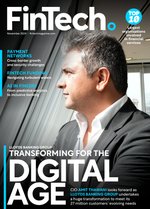Leerink: The Company That Bounced Back from an SVB Demerger
On 10th March 2023, the commercial banking division of Silicon Valley Bank (SVB) collapsed in a dramatic bank run, ranking as the third-largest to date in US history.
SVB’s collapse, the most significant since the 2008 financial crisis, sent shockwaves worldwide and nearly destabilised the innovation economy. With its client base deeply rooted in startups and tech companies, many were left scrambling to secure their finances amidst the uncertainty. At the time of its downfall, SVB stood as the 16th largest bank in the US, with approximately US$200bn in assets.
Among the institutions caught in the storm was Leerink Partners, a key player in the healthcare investment banking space. Once under SVB’s ownership from 2019 until the bank’s collapse in 2023, Leerink has now emerged as a fully independent investment bank. With renewed focus, it continues to provide specialised financial services to investors and healthcare companies, positioning itself as a trusted leader in a rapidly evolving sector.
The successful demerger from SVB was driven by a combination of strong leadership, the dedication of Leerink’s employees and the company’s ability to pivot quickly. A critical aspect of this agility was the strategic decision to keep Leerink’s IT infrastructure independent from SVB early on. According to Chief Information Officer Jeff Gerson, this foresight significantly streamlined the transition and helped make the subsequent transformation more seamless and efficient.
Confronting a demerger: How Leerink Partners bounced back
Leerink began as an independently owned private company formed by its founders in 1995. The firm’s trajectory shifted in 2019 when it was acquired by SVB in a strategic move to expand into investment banking.
“SVB didn’t have an investment banking arm, so acquiring us allowed them to complete the full lifecycle for our shared clients – helping them grow from early-stage ventures to publicly traded companies,” Jeff explains.
For the first few years post-acquisition, Leerink operated with complete independence. However, by 2022, the tides began to shift as SVB found itself under increasing regulatory scrutiny, which brought new challenges to the partnership.
“SVB had just been labelled an LFI – Large Financial Institution – in the eyes of the Fed. Suddenly we were being held to the same regulatory standards as our parent company, which was a huge challenge for our smaller, more agile business unit.”
In 2023, the collapse of SVB triggered an FDIC takeover, followed by its eventual sale to First Citizens Bank, though Leerink was notably excluded from these corporate actions. Jeff reflects on the abrupt change: “We found ourselves stranded in the remnants of a bankrupt holding company. Overnight, our colleagues of four years were suddenly gone and we were no longer part of the same company. It was a jarring shift, but it also marked the beginning of a new chapter for us.”
Leerink then faced the dual challenge of managing both its clients and employees amid an uncertain future. Jeff credits Leerink’s successful navigation of the demerger to the commitment of its employees and culture of flexibility, but emphasises the firm’s resilient and adaptable IT environment was also a crucial factor in shaping the path forward. The seamless transition was made possible through a combination of people and technology working in harmony.
“From the outset, I knew our business processes were too specialised to shoehorn into SVB’s systems,” Jeff recalls. “We needed infrastructure that was tailored to our specific needs before considering full integration. That’s why I pushed to keep our systems independent - Microsoft 365, payroll, HR and business operations. Otherwise, we would have been stuck unravelling systems and processes with a commercial bank that themselves were going through an acquisition. Keeping that independence was a strategic move that allowed us to stay agile and avoid getting caught in the chaos.
“From an IT standpoint, it was no small feat. We had to disentangle elements of our technology environment linked to SVB, including shared services contracts and information exchanges, to fully align with our new independent framework. We also simultaneously undertook a rebranding effort back to Leerink Partners and divested multiple lines of business, all while having to ensure minimal disruption for our clients.”
Leerink moved quickly to redefine its technological future. Jeff spearheaded a comprehensive review of the firm’s IT strategy, realigning Leerink’s priorities to better suit its independent path. The firm initiated an enterprise data programme to streamline operations, introduced a new CRM system to sharpen client insights, modernised its data centre to handle evolving demands and reassessed its office footprint to ensure alignment with future growth. These moves were pivotal in positioning Leerink for long-term success in a post-SVB landscape.
The IT Partner Network lifeline
Maintaining robust technology systems is crucial for providing a first-class experience to both clients and internal teams. Jeff emphasises that Leerink’s partner network plays a pivotal role in this success. Key partnerships with companies like HARMAN, Ricoh, Focus Technology and Grid Squared Systems enable the firm to deliver tailored high-performance technology solutions and services with greater adaptability.
“During our time with SVB, we navigated stringent regulatory requirements by partnering with firms that provided frameworks and best practices,” Jeff says. “HARMAN enhanced our software development capabilities while Ricoh helped implement ITIL standards and ensure compliance. These partnerships allowed us to scale while maintaining compliance and preserving our IT independence from SVB.”
Post-SVB, Leerink IT had to swiftly re-evaluate its data centre and office space strategy. Long-standing partnerships with Focus Technology and Grid Squared Systems enabled decisive action. Focus, alongside Leerink’s IT engineers, led a complete overhaul of the data centre technology within months, replacing legacy hardware and software with modern solutions and zero downtime.
“Our established relationship with Focus gave us full confidence that they were the right partner to drive this critical initiative,” Jeff explains.
He also underscores the importance of the Grid Squared partnership, noting that the company first introduced the Grid Squared Systems’ founders in 2006. “Lon and Nat met on one of our projects and we’ve trusted their ability to deliver ever since,” Jeff says.
In addition to cultivating key partnerships, Jeff founded an IT peer network of investment banking CIOs in 2008, now part of AITEC (aitec.org). This organisation fosters a private community where peers collaborate, share challenges and empower each other to enhance business excellence.
Today, AITEC membership includes over 350+ firms globally, spanning alternative investment firms with over US$4.2tn in assets under management. In addition, AITEC includes a large number of sell-side firms servicing clients in the areas of mergers and acquisitions, sales and trading, equity research, and equity capital markets.
“The most innovative part of my tenure involves a peer network that I originated in 2008 and continue to moderate on a monthly basis. I’ve cultivated strong relationships with fellow CIOs, engaging in regular discussions of common challenges. I can address timely business challenges with insights from peers on issues encompassing people, process and technology. For instance, recent discussions on how investment banks can navigate the risks and benefits of AI have been invaluable. We shared perspectives on AI governance/policies, training, technologies, vendors and legal/regulatory implications, enabling me to launch an effective approach for Leerink Partners.”
Leerink 2.0: Embracing technology and data-driven growth
Since joining the company in 2001, Jeff has seen significant shifts in both banking and digital transformation.
“Leerink is a very entrepreneurial company,” Jeff says. “We've explored various lines of business over the years and many employees have worked here for a long time. In many ways, I feel like a newcomer compared to some of the other people that have been here since the firm was started in 1995.”
Jeff acknowledges that his role has evolved over the few decades. “Cybersecurity wasn't the focus that it is today” he says. “I've since overseen the implementation of a comprehensive cybersecurity programme and now hold responsibility for ensuring regulatory compliance in this area.
“In the early days, everything we did was on-prem, and we had to build custom solutions more frequently. Now, it’s about identifying the right opportunities to leverage what the marketplace offers regarding cloud solutions for IaaS and SaaS.”
When it comes to data management, Leerink aimed for a new approach after the demerger. In 2023, the company embarked on its next significant project – partnering with Element22, leading boutique data management consultancy, to help design a multi-year enterprise data programme.
“We’re working to catch up on several fronts, with data being a key focus. Element22 has helped us get back on track quickly so that we can focus on driving business value,” Jeff highlights.
“We had a proprietary data management system, but it required notable enhancements. With support from Element22, we’ve built a modern data stack leveraging Azure Data Lake and other tools, and we’re now focused on establishing the right governance structure to fully operationalise leading data capabilities.”
Core technologies have been instrumental in Leerink’s digital transformation, with cloud migration, cybersecurity and artificial intelligence playing key roles.
“All of these components are interconnected,” Jeff explains. “Quality data is essential for leveraging AI effectively. We’re actively exploring industry-specific AI opportunities that can enhance our efficiency, scalability and insights.”
“We’re developing a much clearer vision of what will drive our business forward. This ties closely to insights from the IT peer network, allowing us to observe what our peers are doing and strategically leverage those learnings to our advantage.”
Looking ahead, Jeff explains, “We're focused on redefining who we are, with new business lines, emerging opportunities, and expanded geographic reach. Post-SVB, we’re leaning more into technology to shape how we drive results and lead in our space.”
Make sure you check out the latest edition of FinTech Magazine and also sign up to our global conference series - FinTech LIVE 2024
FinTech Magazine is a BizClik brand



